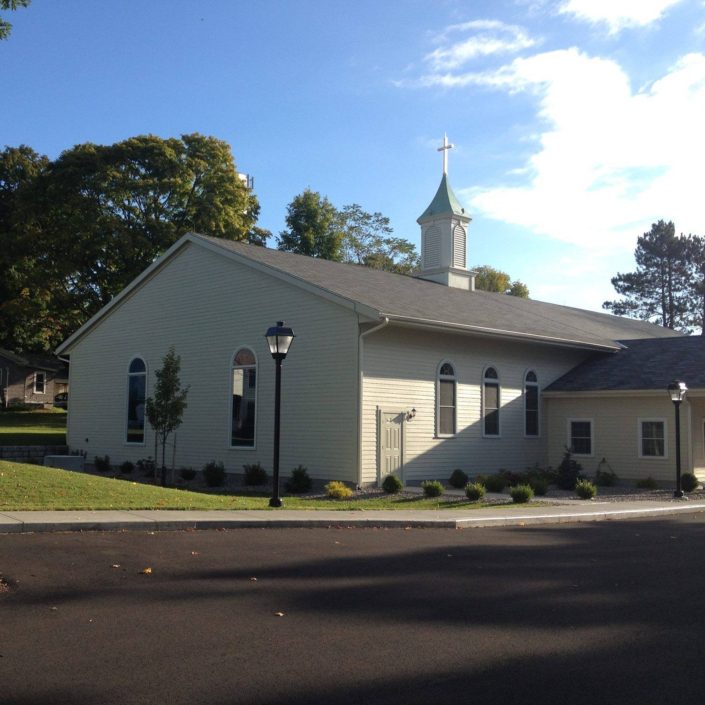
Land Where The Partridge Drums
A History of the Akwesasne Mohawk Nation
Treaties of Contention
by Darren Bonaparte
Last week we were introduced to Colonel Louis Cook, or Atiatonharonkwen, the half-black, half-Abenaki “War Chief” whose patriot leanings earned him exile from Kahnawake during the American Revolution. We also met Thomas Williams and William Gray. Like Cook, they were veterans of the patriot forces and became active in Akwesasne politics in the years after the war. In many respects, Colonel Louis (as his contemporaries called him) was the literal alter-ego of Joseph Brant.
The historical record reveals that they were personal enemies and most likely met in combat from time to time. Yet while Brant has gone on to lasting fame-complete with television and movie biographies-Cook has become something of a footnote in history. Noted in war for his stealth, the illustrious Atiatonharonkwen and his controversial actions have slipped past the critical eye of even the most meticulous of historians. Until now, that is.
In the following passages we will look at the suspicious “quitclaims” (land surrenders) that have made Cook and Brant the most controversial figures in Mohawk history. Part mystery, part soap opera, their rivalry and intrigues have only helped to obscure the truth of what really went on some two hundred years ago. Nevertheless, the impact of their mysterious actions is still felt today.
To maintain a more or less chronological sequence of events, however, we will deal first with events that had little to do with the loss of Akwesasne land but were significant in the development of the community in general. We will also briefly chart the course of events that helped to shape the political realities of our Haudenosaunee brothers, because these too would have an important effect on Akwesasne in the coming years.
Sir John Johnson Founds Cornwall
Despite the minimal role Akwesasne played in it, the war and its aftermath had a major impact on the community. Driven in defeat from the Mohawk Valley, Sir John Johnson and his loyalist forces were granted land on the northern shore of the St. Lawrence River just opposite Akwesasne by the British government in 1783. This was opposed by the Mohawks, who claimed that Sir John’s father, Sir William had recognized their title to that land years before. They used that land for hunting and also allowed white settlers to harvest trees there. The dispute was mediated by Joseph Brant, who urged Johnson to deal equitably with the Mohawks, because he had found “reasonable enough about the lands.” He told Johnson that the Mohawks
“mean to make you a present of the Island facing your lott, (and) they mean to allow you the land you wish to have…But on your part, I hope you will please to get writings for the remainder of the Indian Land.”
He then went on to emphasize to Johnson the need
“to use these Indians in an easy manner…about land matters at this present unhappy times for us, for many reasons, in first place, it gives the dam Rebels larger mouths for many things against us and it is very good example for them, to get all our lands from us, if those Saint Rechis Indians was any ways forced about lands.” (Senior 1983:16-21)
In the end the Mohawk chiefs agreed to allow the British to settle in townships that were separated by a two and three-quarter mile long tract of land through which they (the Mohawks) would have access to their native trading partners in the Algonquin La Petite Nation to the north. The main British settlement was known first as simply New Town, then Johnstown, and eventually Cornwall. The growth of this settlement brought the relatively isolated Akwesasne into closer proximity to non-native trading partners, but it also drew Mohawks into political and military conflicts between the British and their rivals in the United States and between the British and their French subjects in Quebec.
Joseph Hadfield, who visited Sir John Johnson’s home in June of 1785, described an encounter with Akwesasne Mohawks that he found fishing along the river:
“Grand Sault is the most famous rapid on the St. Lawrence, one and a half miles long; bartered for fish with the Indians and found the Maskinonge very fine eating; found the Indians subtle and cunning and hard to barter with. However, a gill of rum went a long way; came upon three men and a squaw dining on fish. They wore very little clothing but were adorned with wampums of shells; their faces were painted in a fanciful manner red and black. Their ears were cut in shreds, had pendants in noses. One of them boasted that he had tomahawked fifty Bostonese; pitched our tent above Rapid Plat; amused ourselves beforegoingtobedinviewing the Canadians dance; have a good notion of time and measure and are lively in their movements.” (Harkness 1946:50)
Next week: The Building of the Stone Church
By Darren Bonaparte, historian and author of The Wampum Chronicles. Reprinted with permission.
Darren Bonaparte is a cultural historian from the Akwesasne First Nation. He is a frequent lecturer at schools, universities, museums, and historical sites in the United States and Canada. He has written four books, several articles, and the libretto for the McGill Chamber Orchestra’s Aboriginal Visions and Voices. Darren is a former chief of the Mohawk Council of Akwesasne. He is the creator of The Wampum Chronicles and historical advisor to film and television. He currently serves as the Director of the Tribal Historic Preservation Office of the Saint Regis Mohawk Tribe.














